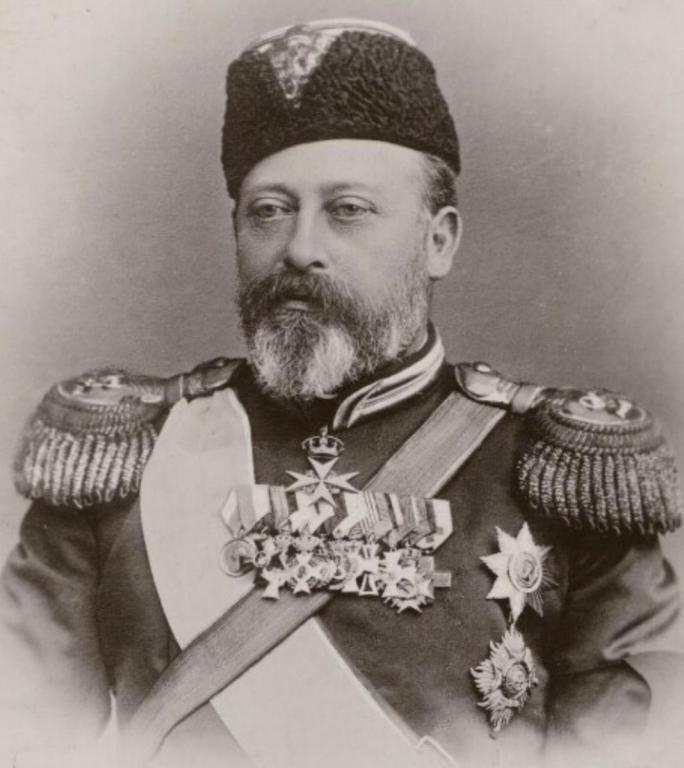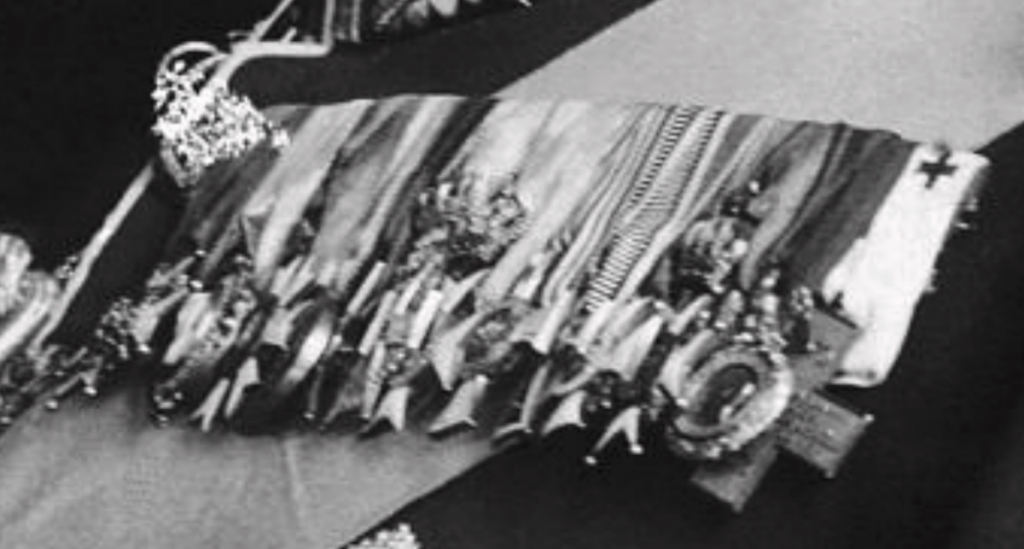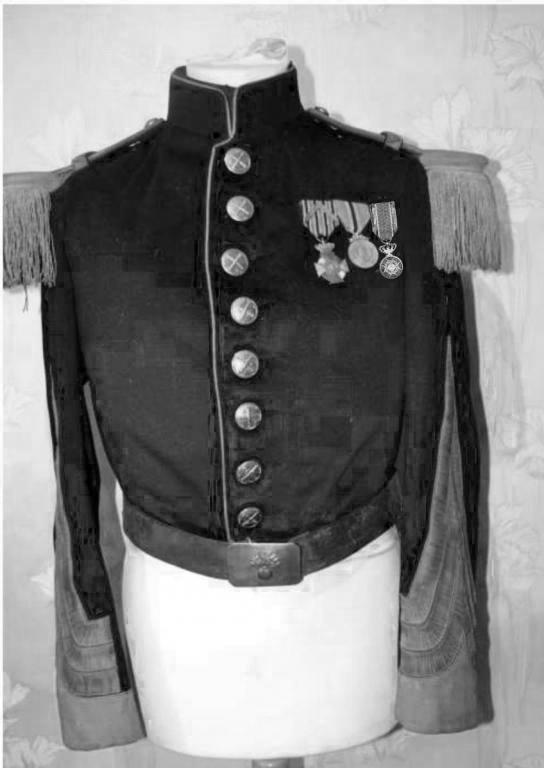-
Posts
1,232 -
Joined
-
Last visited
-
Days Won
9
Content Type
Profiles
Forums
Blogs
Gallery
Events
Store
Everything posted by Great Dane
-
Based on the photo above, this is my guess: 1. Order of the Bath 2. Order of the Star of India 3. Order of St George and St. Michael 4. Victorian Order 5. Order of the Indian Empire 6. Order of St. Vladimir 7. Order of Dannebrog (silver merit cross) 8. Order of the Redeemer 9. ? 10. Austrian 'Marianerkreuz' 11. Hessian Order of Philip the Magnanimous 12. Saxe-Ernestine House Order 13. 2nd Empire Medaille Militaire 14. French Red Cross 1870-1871 So I see 14 decorations. I'm basing my guess for the Saxe-Ernestine order on the shape (although many orders have this shape) and his father's origin. He may have chosen this one as a gesture.
-
Here is a photo of Edward VII in a Russian Guard uniform. The selection of medals is a little different. I can see: ? Russian Order of Wladimir, Danish Dannebrog Silver Merit Cross (aka Honour Cross, not Knight Cross), Greek Order of the Redeemer, ? Danish King Christian IX and Queen Louise Golden Wedding anniversary decoration, Prussian Order of the Crown, 4th class with Red Cross Austrian Marianerkreuz, Hessian Order of Philip the Magnanimous, ? French SSBM Red Cross for 1870-71
-
Would German state orders be worn on the bar if he received them in higher grades? I know that British orders were normally 'represented' on the bar like this (at least for British royalty) and the Silver Merit Cross mentioned above was an 'add-on' to him being Grand Commander of the same order (other royalties like the Russian Czars and the King of Greece wore the Silver Merit Cross too). The Greek Order of the Redeemer could also be represented by a Knight Cross on the bar for Grand Cross recipients, but I don't know if that mechanism was common for German state orders?
-
I'm not a Sweden expert, but it looks like one of the unofficial medals/coins made to commemorate the coronation of King Carl XV in 1860. The reverse would normally have the King's motto ("Land skal med lov bygges"), but that appears to have been removed and replaced with a long service indication... or does the XV numeral maybe refer to the King? I have not seen it with a suspension ring before (and the wreath is slightly different from the ones you normally see).
-
Maybe this PDF file can shed some light: Mountbatten Papers: Tour diaries of Lord Mountbatten It's a little unclear from this clipping who did what, but maybe a starting point?
-
Nice pieces! I assume the Dannebrog Silver Cross is Frederik VIII (successor to Christian IX)? If it was Frederik VII (predecessor to Christian IX), the two decorations would have switched places. Per the statutes, if the Knight Cross was awarded after the Silver Cross, the Silver Cross kept its place as the most prominent award.
-

Is this a official, semi-official or private produced medal ????
Great Dane replied to Marcon1's topic in Africa
I think you guys are missing the OP's point... This is clearly a medal meant to commemorate the Boer War in some way. It bears the 1999-2002 years on the reverse, so it wasn't meant to be passed of as an original. The question is... who made it?... and for what reason? -
OK... re-reading the thread and I'm confused... The top display seems to belong to Sir Henry Keppel (who was probably never awarded the Order of the Sword?). I can't read the brass plate, but I would assume it is his awards... The bottom display belongs to his son Colin Richard Keppel, and I assume that this is the Swedish breast star that Graf acquired? So isn't it the date for Colin Richard Keppel that Graf is asking for?
-
But it doesn't change the fact, that the new owner does not own those ebay photos either? Even if the seller did have the right to publish photos of the object, the copyright of those photos is not automatically transferred to the new owner. As an example (like your bikini example): If I took a photo of medal to sell it on ebay, the new owner of that medal does not own the right to that photo. To the OP: Yes, I have published my own photos (of medals), that were 'reused' by someone else. Since it was done without bad intentions (only for illustrations), I didn't follow up on it...
-
And Simius, correct me if I'm wrong... Most people think that if they buy an old photo on ebay, they also own the photos the seller uploaded to ebay to show and sell the old photo, but they don't. Those new photos still belong to the seller (or maybe to ebay... I haven't studied the fine print to see if the copyright is transferred to ebay in this case...).
-
We have some experts in here that should be able to pin it down. To me it looks like a second type, third class, third grade (the center stone might have been replaced and it obviously misses the top stone). I can not speak for the authenticity - I'm not knowledgeable enough when it comes to that...
-

Dutch medal in a Belgian group?
Great Dane replied to Jef's topic in Northern European & Baltic States
Here is my b/w filter applied (as you can see, the uniform is not significantly 'dis-colored' by the filter): As you can see, there are some differences - the cuffs are not as dark and the black parts of the medal ribbons are more pronounced. So my b/w filter is not perfect (I'm OK with that ?), but I still think it proves - or at least makes it possible - that your guy is wearing the ON medal on its correct ribbon.








